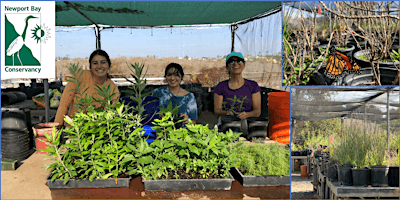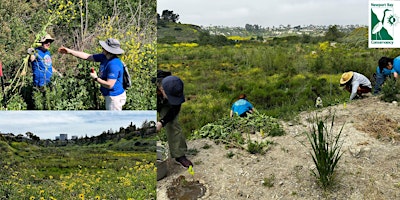
Osprey Mating
Long-time readers of Tracks may recall an article published in 2006 about the historic osprey breeding at Upper Newport Bay that year. After many years of courting, a pair of local ospreys finally mated and produced two healthy fledglings from a clutch of three eggs. While ospreys are fairly common from Santa Barbara northwards, and nesting colonies exist in Baja California, this was believed to be the first successful breeding in Orange County for perhaps nearly a hundred years.
The nesting was a particular thrill for Russ Kerr and fellow Naturalists who had erected in 1993 the elevated platform used by the birds to build the nest. The excitement was however twinged with a little frustration, since the nesting coincided with the construction of the Back Bay Science Center (BBSC) in close proximity to the platform. Construction was therefore delayed. To avoid possible future disruption of nesting, California Department of Fish and Wildlife (DFW) staff enlisted the help of a local line crew from Southern California Edison who volunteered their time to erect a new pole further from the buildings, and relocate the platform to it. This proved very successful. In 2007 the ospreys nested again and two of three chicks fledged. In 2008 all three chicks fledged, and in 2009 all four chicks fledged. This is a great success. The original osprey pair is now already nesting again.
We receive many questions about the ospreys. The most common is: “What has happened to all of the fledglings?” Well we know for certain where several of them are, and we can surmise about the whereabouts of the others based on general knowledge of osprey behavior.
Ospreys are found worldwide and nest on all continents except South America and Antarctica. They are generally migratory, but may stay year-round in temperate climes. They feed almost exclusively on fish and are found in coastal areas, and near rivers and lakes. For this reason, the osprey (Pandion haliaetus) is also known as the sea hawk. It is awesome to watch an osprey swoop feet first and catch a large fish just below the water surface in its talons. As it rises from the water, it rotates the fish in its talons to align the fish with the direction of flight and heads to a nearby perch to eat.
Osprey pairs build their nests high in trees and on other tall structures, mostly in sight of water, though the birds will forage up to five miles away. Depending on location, nesting may be singly or in colonies. From courtship through fledging the males typically supply nearly all of the meals for the female, who in turn feeds the offspring. Osprey eggs typically hatch after about five weeks of incubation and chicks fledge about eight weeks after hatching and stay in and around the nest for about another eight weeks before departing. Young ospreys often return to the area of birth a couple of years later. They mature sexually at about three years old and then generally mate for life. They will live to 25 years or more.
A lot is learned about bird behaviors by placing numbered bands on the legs of chicks before they fledge. Local zoologist and raptor expert Pete Bloom bravely climbed up to the nest in both 2008 and 2009, risking attack from the parents, to band the BBSC chicks. These bands are easily readable by birders using powerful spotting scopes or cameras with large telephoto lenses. Sightings of UNB ospreys have occurred from Crystal Cove to Bolsa Chica. Amateur wildlife photographers and members of the Sea and Sage Audubon Society recently discovered one of the 2008 fledglings is paired with another un-banded bird and building a nest at the San Joaquin Wildlife Sanctuary. According to Bloom team member and Audubon Conservation Chair, Scott Thomas, this is the first confirmation of any of the banded birds breeding. It is a bit young; most ospreys are at least three years old before they breed. So the team is anxious to track its success this spring. There is also a nest being built near the Anaheim Lakes area, making three confirmed nests in Orange County. It looks like this magnificent bird is making a comeback in southern California!
If you see an osprey with a leg band please report your sighting (with band number if known) to Scott Thomas at redtail1@cox.net or call Sea and Sage Audubon at 949-261-7962.










